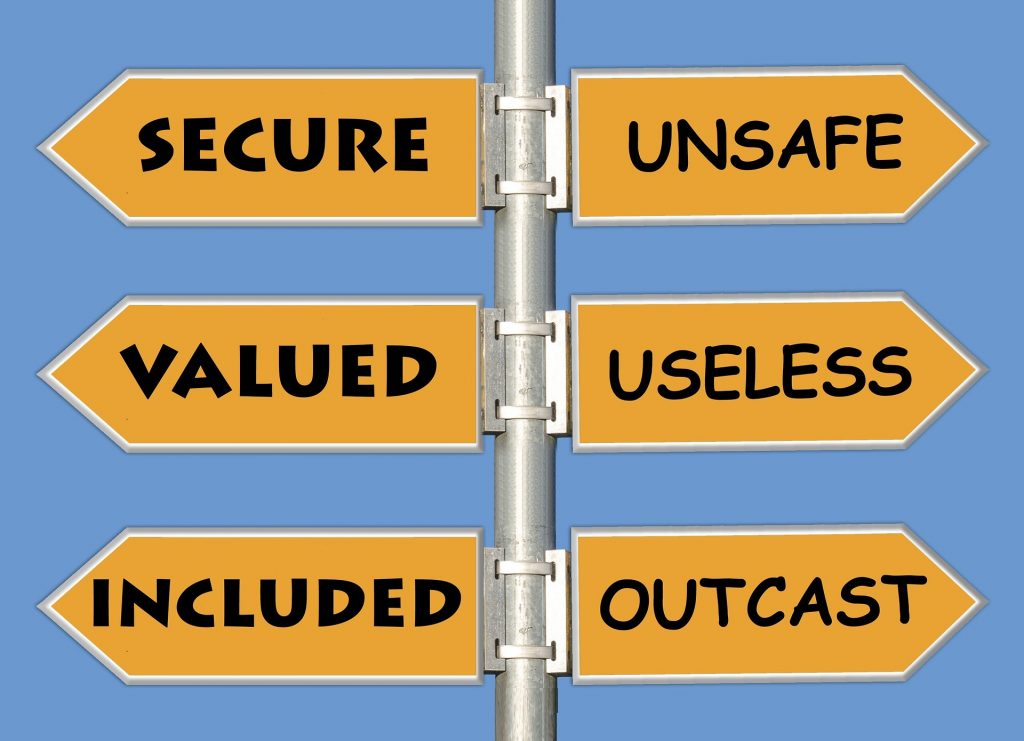
by | Nov 14, 2022 | Uncategorized
By: Natalia Strelnikova
What is Craniosacral Therapy (CST)?
Are you currently experiencing pain in your body? A lingering, distracting, and intense pain that prevents you from doing your daily activities. It can be a recurring headache that just randomly starts any time of the day. Or a low back pain that’s just suddenly there even though you did not lift anything heavy. And for some people, it can be a side effect of some serious illnesses such as cancer or endocrine disorders. With these concerns, maybe it’s time to consider undergoing craniosacral therapy.
Craniosacral therapy (CST) uses a soft-touch technique that helps check membranes and fluid movements within and around the central nervous system. This kind of therapy is a bit similar to manual osteopathy since they both use the movement of the hands to relieve discomfort and other symptoms. However, there’s a difference in the approach since manual osteopathy focuses on the entire bodily system functions rather than just the nervous system.
Accordingly, this kind of therapy assists in your body’s overall health and restores your proper balance. After taking a few treatment sessions, it leaves you with stronger immunity, improves health, and enhances the natural healing process. Moreover, it increases the body’s efficiency and effectiveness against fighting certain conditions. In effect, it’s safe to be performed on both children and adults.

What kinds of conditions can CST cure?
CST can help with mild to moderate health conditions ranging from a simple headache to more complicated cases such as dealing with depression. If you’re experiencing sinusitis because of allergens or are experiencing recurring migraines, then you should consider CST to help you with relief. This kind of therapy aids in releasing the pain and tension in your body. Sometimes, too much stress and anxiety may be causing your body pains and sickness.
Some other conditions that CST can help cure are:
- Headaches/migraines
- Sinusitis
- Head, neck, and low back pain of varying severity

CST can also help with other more serious conditions such as:
- Temporal bone (TMJ) dysfunction
- Scoliosis
- Pain syndromes
- Eye/motor coordination problems
- Endocrine disorders
- Emotional problems
- Depression
- Post-concussion syndrome
How is Craniosacral Therapy (CST) session performed?
Unlike in most common therapy sessions, CST sessions are performed where you stay fully clothed throughout the procedure. Before proceeding with the treatment session, a consultation is done with a licensed therapist to determine your problem. Subsequently, soft music is played to create a relaxing ambiance for you, and often soft lighting is used to deepen your state of relaxation.

During the treatment session, your therapist uses gentle pressure techniques to look for blockages in your fascial system. This hands-on technique is also used to pinpoint areas that are sore because of too much stress in the body. The pressure is naturally relieved on the muscles and organs with the help of light touch, which improves overall body function.
Can everyone undergo a Craniosacral Therapy (CST) session?
The answer is no. Although this treatment is good for the well-being of all ages, there are certain health conditions that needs to be deeply evaluated by the therapist. For instance, if you are experiencing any of the following conditions below, you should disclose it to your therapist since CST alone may not be the solution.
- Recent concussion.
- Cerebral Problems such as Cerebral Edema (Brain Swelling) and Cerebral Aneurysm (Brain Aneurysm).
- Structural defects in the cerebellum such as Arnold-Chiari malformation.
- Traumatic brain injury (TBI).
- Clotting Disorders (Blood Clots).
- Any disorder that causes instability of cerebral fluid pressure, flow or build-up

If you’re planning to try CST but thinking of charging it in your insurance, then you must know this. CST is excluded when it comes to insurance coverage so you must prepare a certain budget to cover for this medical expense. Though it is unfortunate that this is the case, there’s more benefit to CST than just thinking about the cost.

by | Oct 17, 2022 | Uncategorized

In a world where we strive to be physically fit and excellent in all aspects, it is equally important that we achieve emotional wellness. We often disregard our emotions or feelings because we feel like we are being “vulnerable” when we show people how we truly feel.
But did you know that when your emotions are suppressed, and you don’t do anything about it, you have a higher chance of getting sick? Yes, your emotional well-being affects not only your daily mood but also weakens your immune system, disrupts your sleep, and shortens your life.
Here are 4 things that you can do to achieve emotional wellness:
Just like how our body needs exercise to function well it is also encouraged that you meditate often. Why meditate? Because it helps you achieve deep relaxation which allows your brain to focus, and leaves you with a calm mind.

Moreover, it helps you decrease your metabolism, lowers your blood pressure, and it improves your heart rate and breathing. It also increases your brain power as it allows you to speed up your stress recovery by recharging your brain waves.
Bonus tip: Create a corner in your house where you can meditate or do breathing exercises. If you have little space at home, you can try walking for 30 minutes a day or try connecting with nature.
-
Get enough sleep or rest.
Our body usually sends a signal to our brain when we are overworked and we’ve reached our limit. So, if you are feeling tired and burnout lately, then it’s about time you consider taking small naps or rest in between your schedule.

Getting enough rest allows your body to repair, reenergize, and refresh. Every time you take a nap or you get enough rest, the cells in your body start to heal and help you re-align your thoughts. That’s why weekends should be enjoyed and taken more seriously because it allows you to take a break from your schedule.
Bonus tip: Create a restful environment in your bedroom by adding some sleep-inducing plants such as lavender or snake plant.
-
Train your mind to focus on positivity.
As much as you want to stick to healthy eating habits, you should also train your mind to enjoy the little things and dwell on positivity. How? By being mindful and grateful each day. In doing so, you are empowering yourself to have a lighter, happier disposition in life.
Being mindful allows you to rewire your brain and change how you feel, think, and act in a certain situation. However, being grateful allows you to appreciate every person that you meet, every experience that you go through, and every simple thing that you have.

Bonus tip: Keep a journal where you can write what you are grateful for. Or, establish a mindfulness meditation where you can express your thoughts and feelings.
-
Talk to a therapist/psychologist.
If you have done these 3 things and you still feel like you are mentally and emotionally drained, then maybe it’s time you seek the help of a professional. Talking to a therapist/psychologist is greatly advised since they are highly qualified to help you with the knowledge about your assessment and the approach needed to help you.

Since each one of us is unique, our goals, needs, and personalities are taken into consideration and that’s how they will determine the steps needed to help you achieve emotional wellness. After all, they are experts when it comes to expressing and releasing such emotions more healthily.
October is Emotional Wellness Month
Since October is emotional wellness month, why not try to include activities and daily habits that will help you be emotionally well? Remember to slow down and reflect when you are too overwhelmed. Keep your emotions in check and don’t be afraid to express how you truly feel.

More importantly, check on your loved ones and re-establish your deep connection with them. Let them know that you are always there to give your support and don’t be shy to ask for their help if you ever need it. Always remember that to achieve overall wellness, you must be physically, mentally, spiritually, and emotionally fit.

by | Mar 10, 2018 | Uncategorized
Challenging negative thinking patterns and behaviors
“In the midst of movement and chaos, keep stillness inside of you.” –Deepak Chopra. I absolutely love this quote and I keep it as a daily mantra to remind myself that I am truly in control of how I choose to react to the events that are happening in my life. In a fast-paced and ever-changing world, it is far too easy and very common to get into our own heads. With that, we can often get fixated in ruminating and extremely repetitive thoughts. The most challenging part about it is that it’s difficult to even notice, as our thought patterns and ways of thinking become so ingrained into our psyche, we can often fail to notice that it is actually happening. It becomes our automatic machinery, and we can inevitably be left feeling stuck, trapped, and at times helpless; however, we never truly are. We have the ability to be flexible and malleable in modifying our thought patterns, more so if we have the capacity to recognize what those are.
Hunter et al (2009) from Integrated Behavioral Health in Primary Care explain how to challenge several of these negative thinking patterns, and how to properly catch yourself in them:
1) All or nothing thinking-you can only see things in extreme opposites of the spectrum or in black and white, and there is no room for anything else or no happy medium. “I am either everything, or I am nothing.”
2) Jumping to conclusions-negative conclusions are made with little or no facts to back them up. “My loved one isn’t home yet, the only possible conclusion is that something bad must have happened to them.”
3) Fortune telling-you assume that things can, and will, certainly end badly. “Because I didn’t get a good grade on my exam, I will ultimately fail out of my program.”
4) Should statements-words like ‘I should ‘I must’ ‘I ought to’ can lead to extreme anxiety and dis-illusions of oneself and one’s values, abilities, and self-worth. “I am of a certain age, which means I should be married by now.”
5) Emotional Reasoning-the notion that because you feel a certain way, the assumptions you make about how you feel must be true. “Since I feel anxious, it must mean that there is something seriously wrong going on.”

There are many other disoriented thinking patterns discussed by Hunter et al (2009), however those are the most common ones that I have encountered in practice. Often, we are a subtle combination of many of them, even within a single day. This is why I love sending home Automatic Negative Thought records (or ANTs), as it gives people a chance to see these thought patterns head on, and it really gives an idea of how their thoughts effect their reality.
Having an aptitude to examine upsetting thought patterns is extremely helpful. It gives an individual the chance to really see those patterns for what they are, as well as to really challenge them. Seeing a thought pattern in front of you, and examining evidence for, as well as evidence against it, really helps rationalize something that is usually at a deeper level, very irrational.
It is very common to see stress, and anxiety manifest into physical illness, and I have seen this time and time again. Stress causes inflammation in the body and can cause serious digestive, joint, and even perpetuate autoimmune disorders (Gabor Mate 2003, When The Body Says No). It is truly fascinating to see what stress reduction and increasing positive mental-emotional coping mechanisms can do, not only for better mental health, but physical health and fitness as well.
I also find it very important to examine physical and organic causes which can perpetuate depression, stress and anxiety, and working to heal those triggers at the same time. Polycystic ovarian syndrome (PCOS), adrenal fatigue, sleep deprivation, poor diet, cortisol or hormonal imbalances, and vitamin and mineral deficiencies, (often vitamin D3, or B12), as well as ferritin, and iron deficiencies, can all help with identifying any pre-existing states that need to be examined in order to make sure a sincerely holistic and all-encompassing approach is taken.
Adrenal injections, high dose B-complex injections, as well as traditional Chinese medicine, acupuncture, homeopathy, botanicals, supplements and diet, all work together to ensure an individual’s ability and resilience to stress is at its truly optimal state.
References:
Hunter et al (2009), Integrated Behavioral Health in Primary Care.
Gabor Mate (2003), When The Body Says No.

by | Mar 8, 2018 | Uncategorized
My family and I just got back from an amazing trip to Argentina. It was so restful and rejuvenating, and I didn’t come back feeling like I needed a vacation following my vacation. Yesterday, I was reflecting on our time away and the joy I experienced, and then remembered that I had experienced some anxiety and panic leading up to our trip.
I don’t know about you, but every time before we go on vacation somewhere hot (i.e., where wearing a bathing suit is involved) a lovely little voice likes to pop into my head and say…”okay, you’ve got X amount of days/weeks to lose X amount of pounds. When you lose some weight you will be ready to have an amazing time on vacation. When you drop 10 pounds you will be happy.”
 This voice is certainly not coming from my inner leader, but instead a sneaky saboteur trying to convince me that I will be happier “when”. A few days before our trip to Argentina (where we have family and friends who I will see again) the lovely voice was back letting me know that “you’ll be okay this trip, but think about next time when you have lost some of your baby weight.” Yep, the voice is good, it’s so positive and optimistic, NOT!
This voice is certainly not coming from my inner leader, but instead a sneaky saboteur trying to convince me that I will be happier “when”. A few days before our trip to Argentina (where we have family and friends who I will see again) the lovely voice was back letting me know that “you’ll be okay this trip, but think about next time when you have lost some of your baby weight.” Yep, the voice is good, it’s so positive and optimistic, NOT!
With so many years of experience with this lovely little voice…I witness myself moving quite quickly from “when” to “and”. I love my life, I love me as I am, in this moment AND I will continue to live a healthy lifestyle. If that results in dropping a few pounds, great, but the joy I experience in my life and my love for myself, in this moment, is not dependent on it.
So what’s your “when”? When I…lose 10 pounds, get that promotion, have children, finish this big project at work, move into a larger home…Whatever it is, what would it be like to feel joy now, in this moment AND commit to goals that are important to you? You might even find that finishing a project or dropping 10 pounds – that goal that has the “I will be happy when…” attached to it – is really not what is most important, you just have it on your “to do” list because you’re supposed to or you think you should.
What if you experienced joy in your life, loved your life and loved who you are, as you are today, in this moment?
I’m not saying drop your goals, go after them if they are important to you. I’m just throwing out there that experiencing joy and fulfillment is something that is available to you in this moment, if you are willing to let it in. And you can have goals and create change in your life.
Amanda Delamer is a self-awareness and fulfillment coach. Amanda coaches and supports people in living healthy, balanced and fulfilled lives. She coaches and honours the whole person – mind, body and spirit. Her clients experience fulfillment in all parts of their lives – health, family, relationships, career, and beyond – and they value and appreciate that all parts of their lives are connected, and that we all have responsibility in and for the world around us. She lives in Calgary, Alberta, Canada with her husband and three children.
Book in for your complimentary coaching session with Amanda Delamer. Call 403-452-6262. NEW CLIENT PROMOTION – 4 months of Coaching for the price of 3! Create space for joy, fulfillment and self-awareness!

by | Mar 2, 2018 | Uncategorized
It is a pleasure to share my new love…homemade coconut yogurt! I have had an intolerance to dairy since I was a child, but still consumed it up until a few years ago when symptoms got worse with dairy consumption. I find dairy intolerances and allergies in many patients, so I love to be able to provide alternatives. Coconut yogurt is a wonderful alternative to regular yogurt if you are experiencing negative reactions to dairy or even lactose intolerance. Store bought coconut yogurt can be expensive and have added sugar and flavours. So I have been wanting to try to make my own but the task seemed quite daunting until I borrowed an Instapot. I was sceptical about how ‘amazing’ this pot really could be, but wow did it exceed all expectations.

My favourite thing about yogurt is it contains healthy bacteria or probiotics. I am a huge fan of healthy gut bacteria, probiotics, and fermented foods. When we are able to get the healthy bacteria we need from the foods we eat rather than supplementing, GREAT! Fermenting foods improve the absorbability of nutrients in the yogurt because they are partially broken down by the bacteria.However, when we are consuming flavoured yogurt the additional sugar can counteract the benefits of the healthy bacteria. If you are dairy intolerant I also don’t recommend getting your healthy gut bacteria from traditional dairy yogurt. Try the coconut yogurt, it won’t disappoint. It tastes just like plain yogurt with a hint of coconut, but it isn’t a strong coconut flavour. It is also a great source of healthy fats, to keep you full and satisfied.
Coconut yogurt in a Instapot– This was so easy I can’t believe it.
2 cans coconut cream
1tbsp gelatin (grass fed preferable)
1 package of yogurt culture (can get at health food store)
1. Bring the coconut cream to a boil, there is a boil function in yogurt settings.
2. Let it cool to 100 degrees F (ensure not warmer as it can kill off the good bacteria)
3. Mix in yogurt culture (I have used probiotic capsules and just broken the capsule apart and poured in. My understanding is that this isn’t the best method as some of the bacteria may not survive so it won’t be as high in probiotics as if you were to use a yogurt culture, the taste was identical)
4. Set Instapot to yogurt and leave for about 8 hours
5. After the 8 hours, add 1tbsp gelatin and mix well. Refrigerate overnight (about 8 hours)
6. Enjoy, can add toppings to it if desired
















 This voice is certainly not coming from my inner leader, but instead a sneaky saboteur trying to convince me that I will be happier “when”. A few days before our trip to Argentina (where we have family and friends who I will see again) the lovely voice was back letting me know that “you’ll be okay this trip, but think about next time when you have lost some of your baby weight.” Yep, the voice is good, it’s so positive and optimistic, NOT!
This voice is certainly not coming from my inner leader, but instead a sneaky saboteur trying to convince me that I will be happier “when”. A few days before our trip to Argentina (where we have family and friends who I will see again) the lovely voice was back letting me know that “you’ll be okay this trip, but think about next time when you have lost some of your baby weight.” Yep, the voice is good, it’s so positive and optimistic, NOT!
